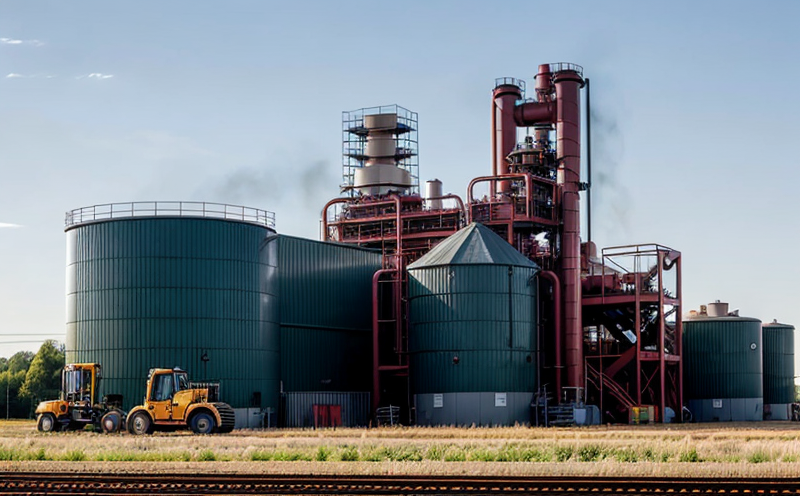ISO 11204 Printing Press Noise Level Testing
The ISO 11204 standard provides a framework for measuring the noise levels produced by printing presses. This service is crucial in ensuring that machinery meets stringent acoustic regulations and contributes to reducing occupational noise exposure. Noise pollution from industrial equipment, particularly high-speed machinery like printing presses, can have significant health impacts on workers if not controlled properly.
Our laboratory adheres strictly to ISO 11204 for this testing service, utilizing state-of-the-art sound measurement instruments such as sound level meters and octave band analyzers. The process involves placing the press in a controlled environment where noise levels can be accurately measured under specified conditions. This ensures that the data collected is representative of real-world operating scenarios.
Testing typically includes several key steps:
- Setup of the printing press in a sound booth to minimize external interference
- Calibration of measurement instruments before and after testing
- Conducting the test under specified conditions (e.g., paper type, ink, speed)
- Data analysis using ISO-defined methods
The results provide critical insights into how well the press design mitigates noise. This information is invaluable for manufacturers who aim to improve product performance and safety while complying with international standards.
| Condition | Description |
|---|---|
| Press Speed | The speed at which the press operates during testing. This can vary widely depending on the type of printing being conducted (e.g., offset, flexo). |
| Paper Type | The type of paper used in the test. Different papers have different acoustic properties that can affect noise levels. |
| Ink Composition | The specific ink formulation which can influence sound propagation and absorption within the press. |
Understanding these factors is essential for accurately measuring noise levels according to ISO 11204. Proper interpretation of these variables allows our team to provide precise, actionable data that helps clients meet regulatory requirements while enhancing worker safety.
The impact of this testing extends beyond compliance; it also plays a role in product design and development. By identifying areas where noise can be reduced, manufacturers can improve the efficiency and comfort of their machines. This not only benefits employees but also enhances the reputation of the company as an industry leader committed to sustainability and worker well-being.
Applied Standards
The ISO 11204 standard is part of a broader set of guidelines aimed at ensuring that machinery operates within safe noise levels. This particular standard focuses specifically on printing presses, which are known for generating significant amounts of noise during operation. Compliance with this standard helps protect workers from potential hearing damage and other health risks associated with prolonged exposure to loud noises.
The application of ISO 11204 involves several key aspects:
- Regular testing of printing presses under various operating conditions
- Documentation of test results for quality control purposes
- Review and analysis of data to identify trends or areas needing improvement
- Implementation of changes based on findings to reduce noise levels
By adhering to these steps, companies ensure that their machinery remains compliant with international standards. This commitment to safety demonstrates a dedication to both employee health and regulatory adherence.
Industry Applications
The ISO 11204 standard finds application in various sectors where noise control is paramount. Printing presses are just one example of machinery that can generate excessive noise, posing risks to workers' hearing and overall well-being. By testing these machines according to this standard, manufacturers can identify potential issues early on and implement necessary changes.
- Printing industry: Ensuring compliance with local regulations regarding workplace safety
- Paper manufacturing: Protecting employees from noise-induced damage during production processes
- Graphic design firms: Minimizing disruptions caused by noisy equipment in collaborative work environments
- Logistics and distribution centers: Reducing noise levels to improve communication and safety within facilities
The data obtained through ISO 11204 testing can be used not only for compliance but also as a tool for continuous improvement. It allows companies to stay ahead of regulatory changes and adapt their practices accordingly.
Customer Impact and Satisfaction
Our clients benefit significantly from our ISO 11204 Printing Press Noise Level Testing service. Compliance with this standard not only ensures that they meet international regulations but also enhances the safety and comfort of their employees. This can lead to improved productivity, reduced absenteeism due to health concerns, and a positive reputation for being socially responsible.
- Increased worker satisfaction
- Better overall company image
- Enhanced compliance with regulatory requirements
- Potential cost savings through early identification of issues
Client feedback consistently highlights the value they place on our thorough approach to testing and reporting. Our detailed reports provide actionable insights that help guide decision-making processes related to equipment upgrades or modifications aimed at reducing noise levels.





